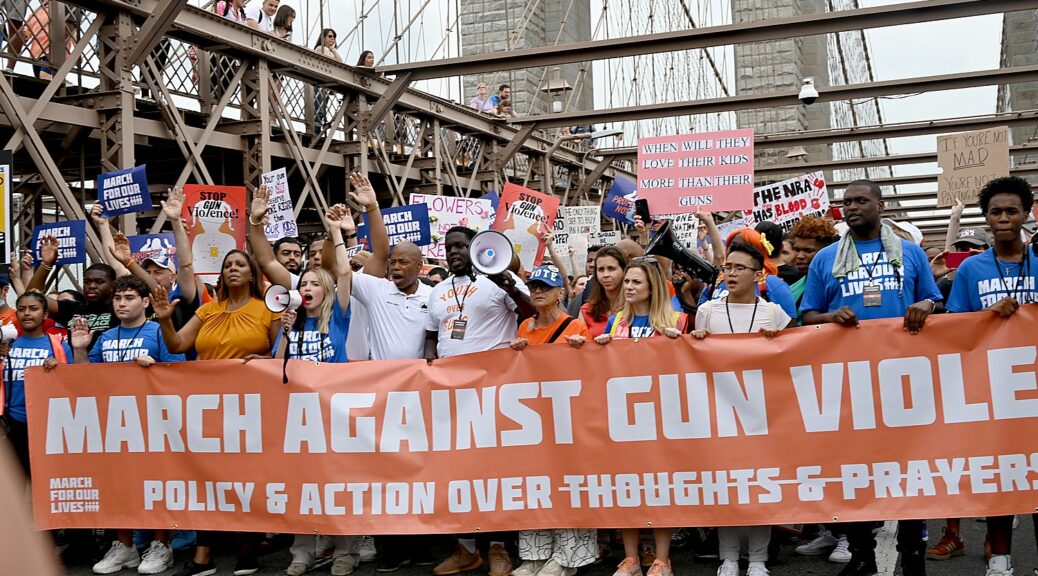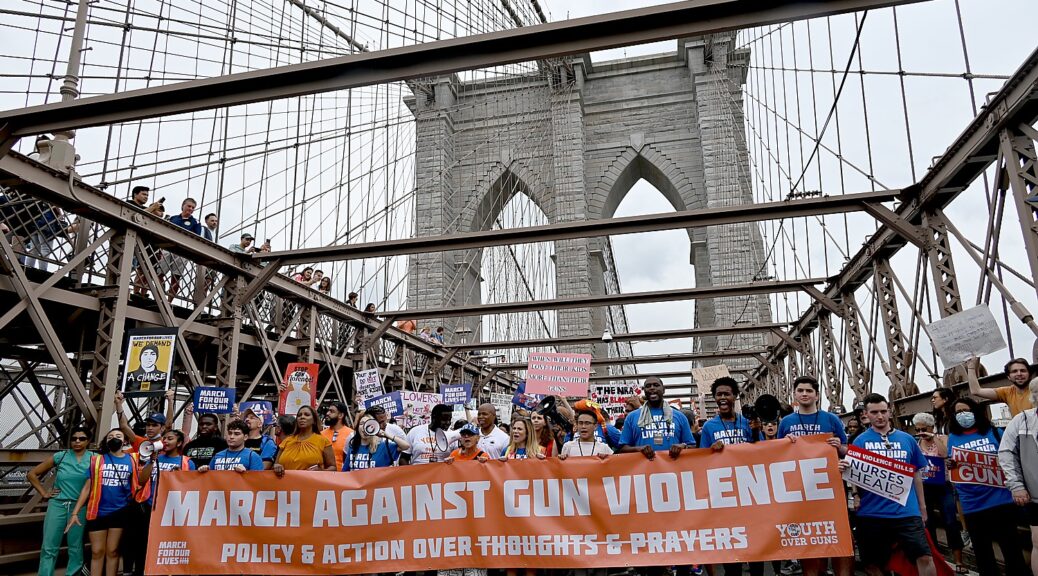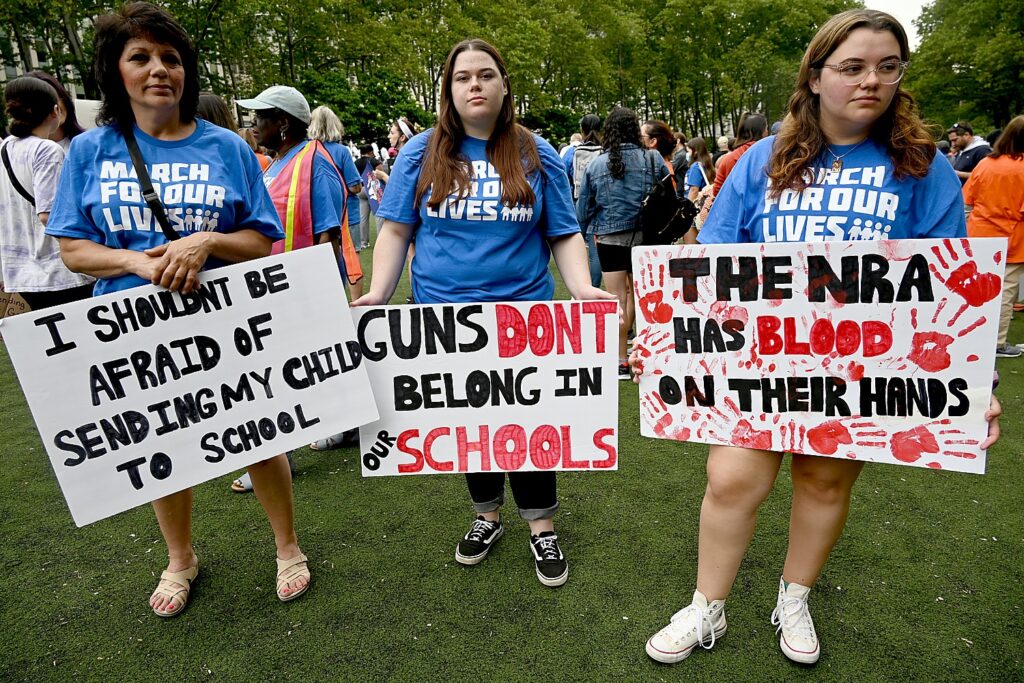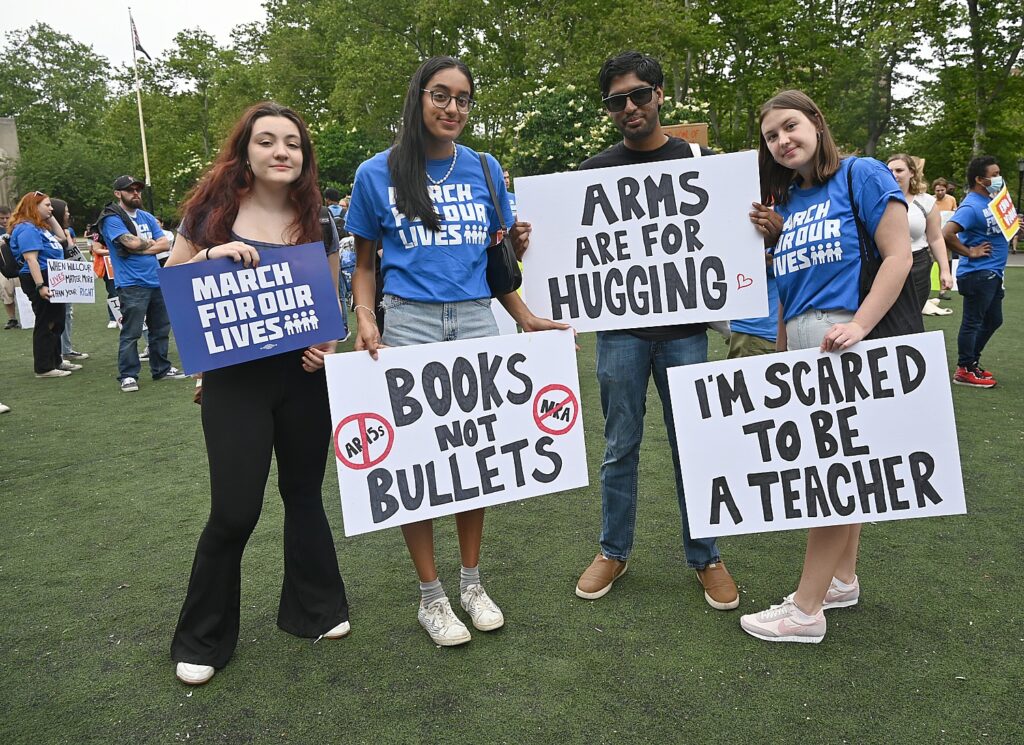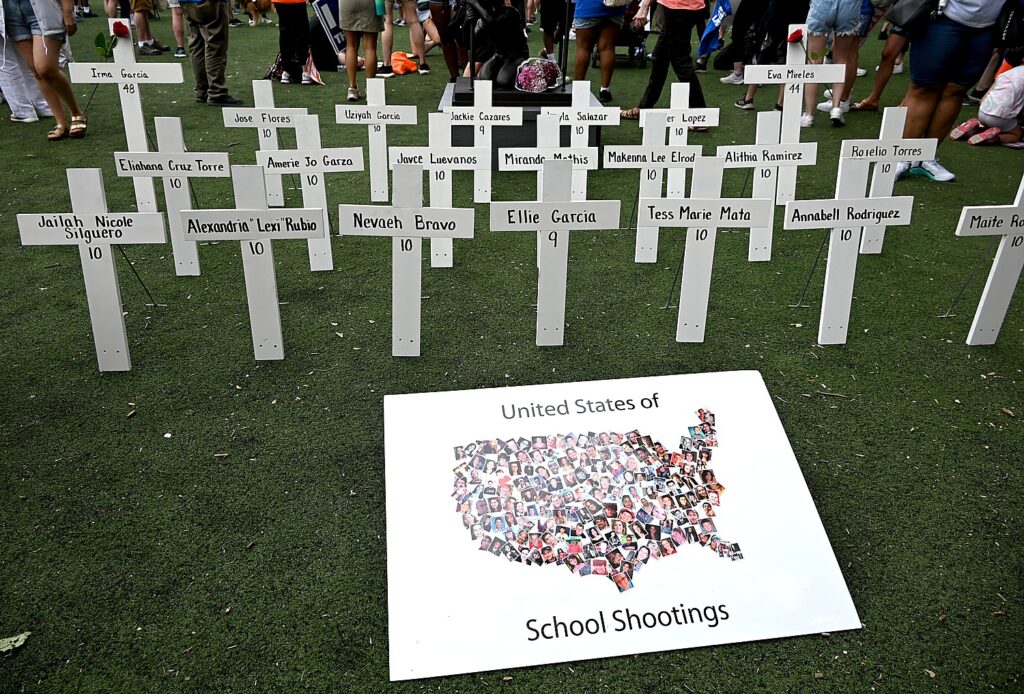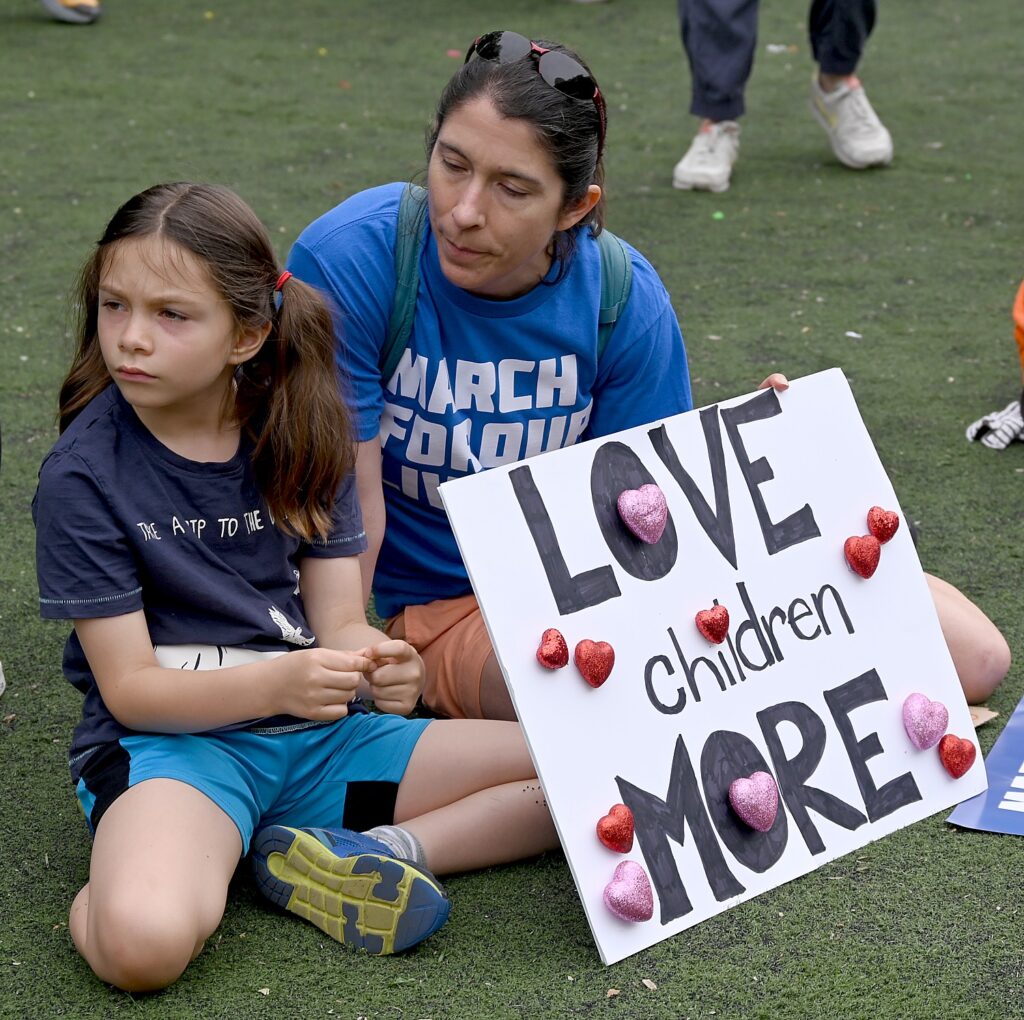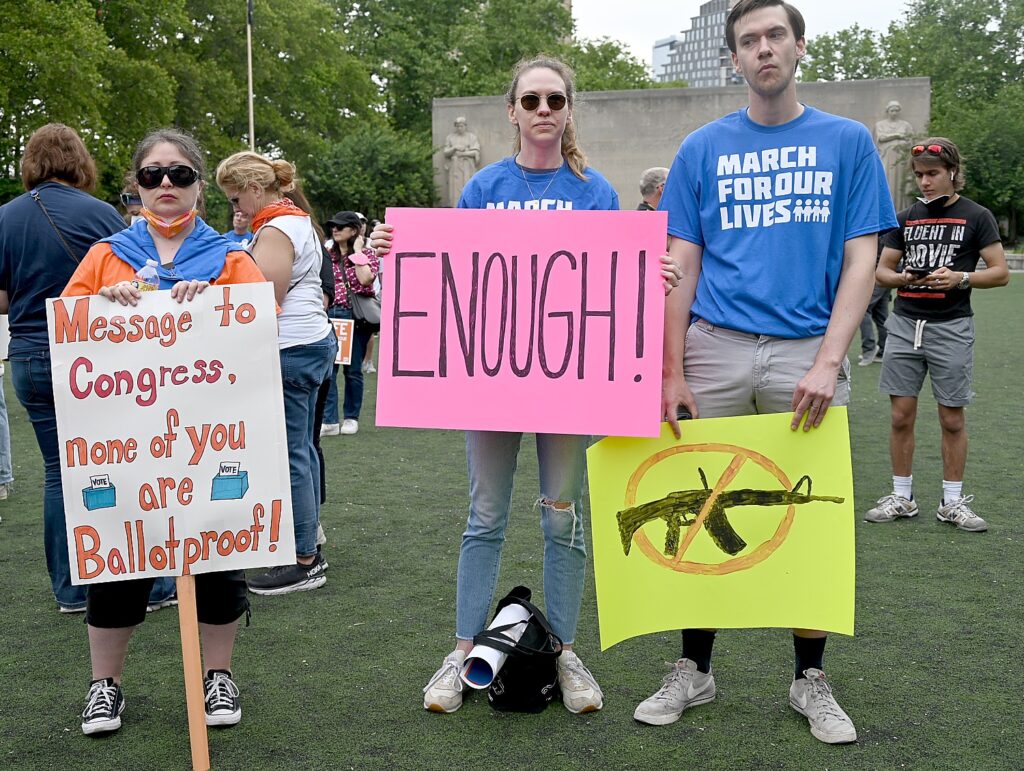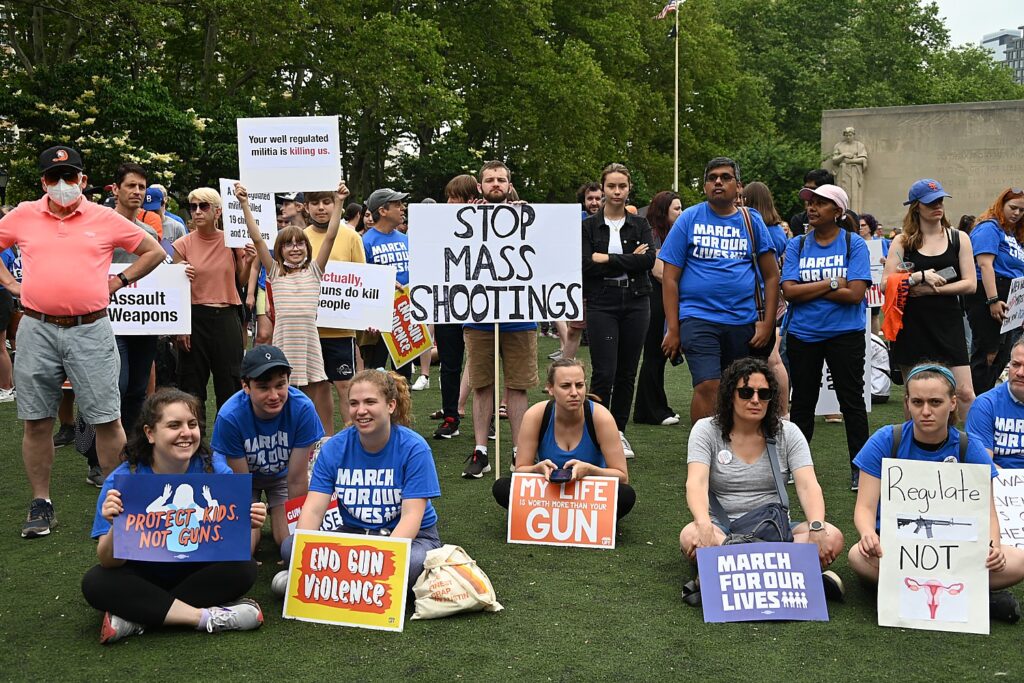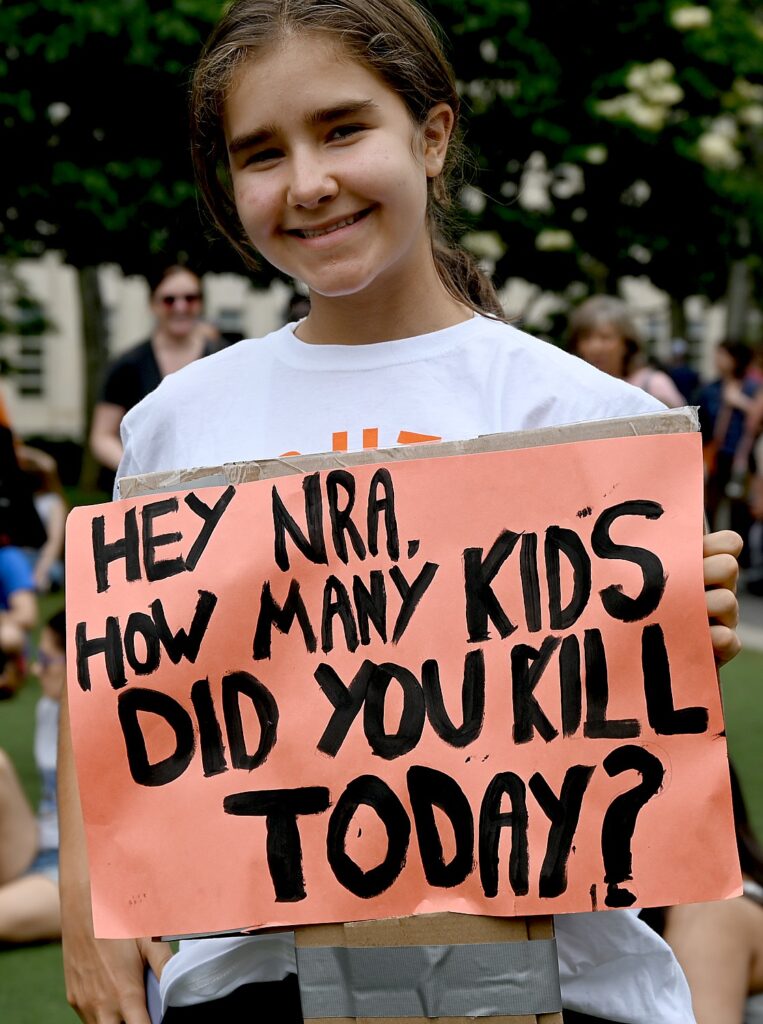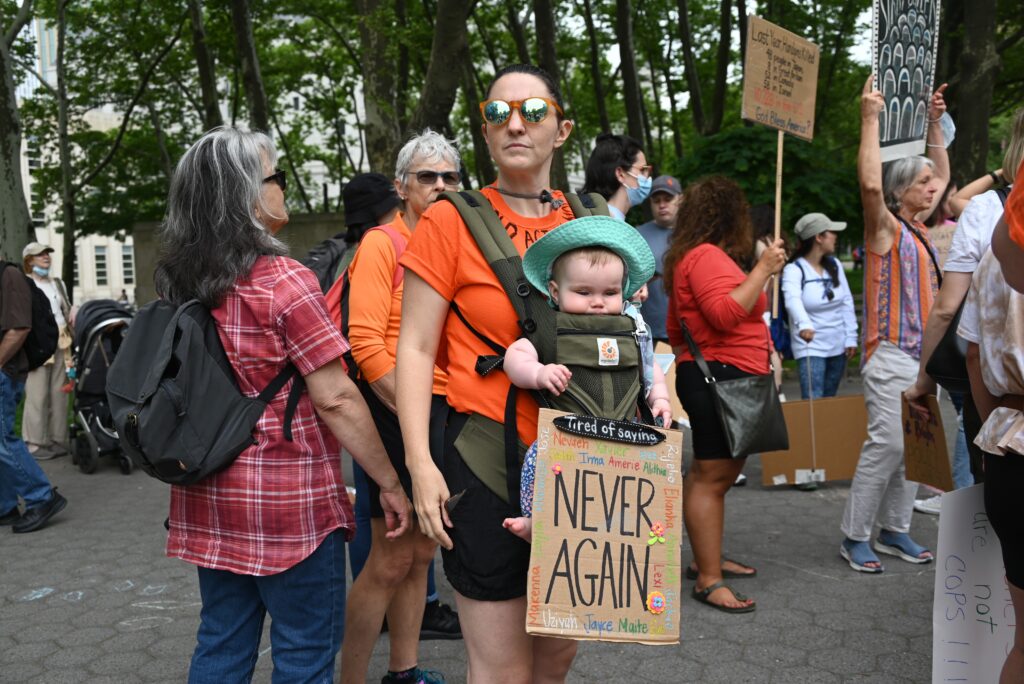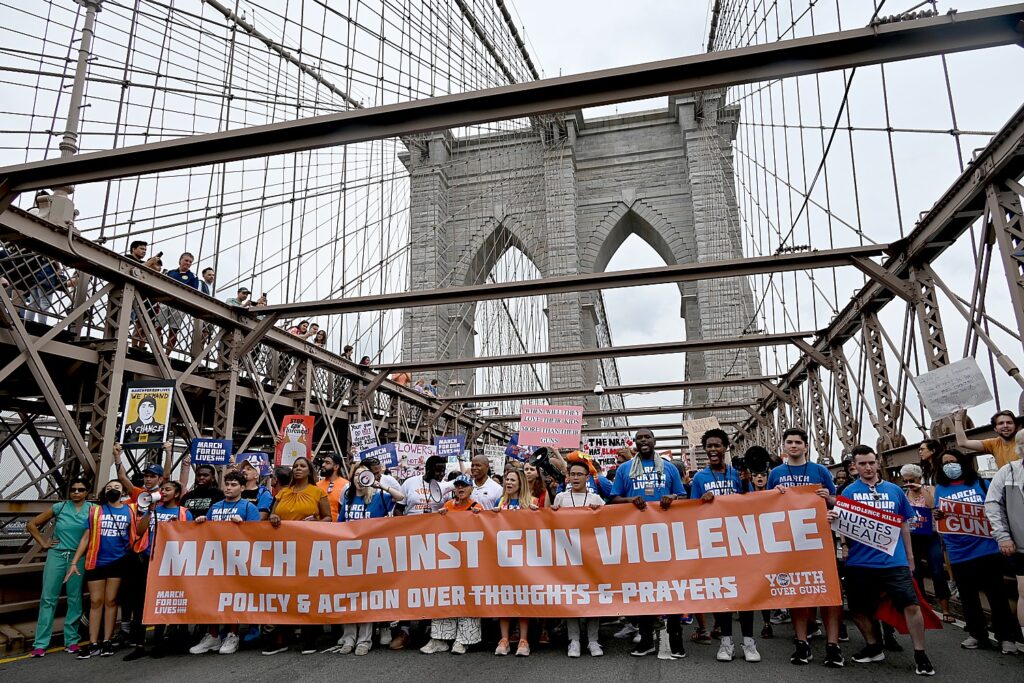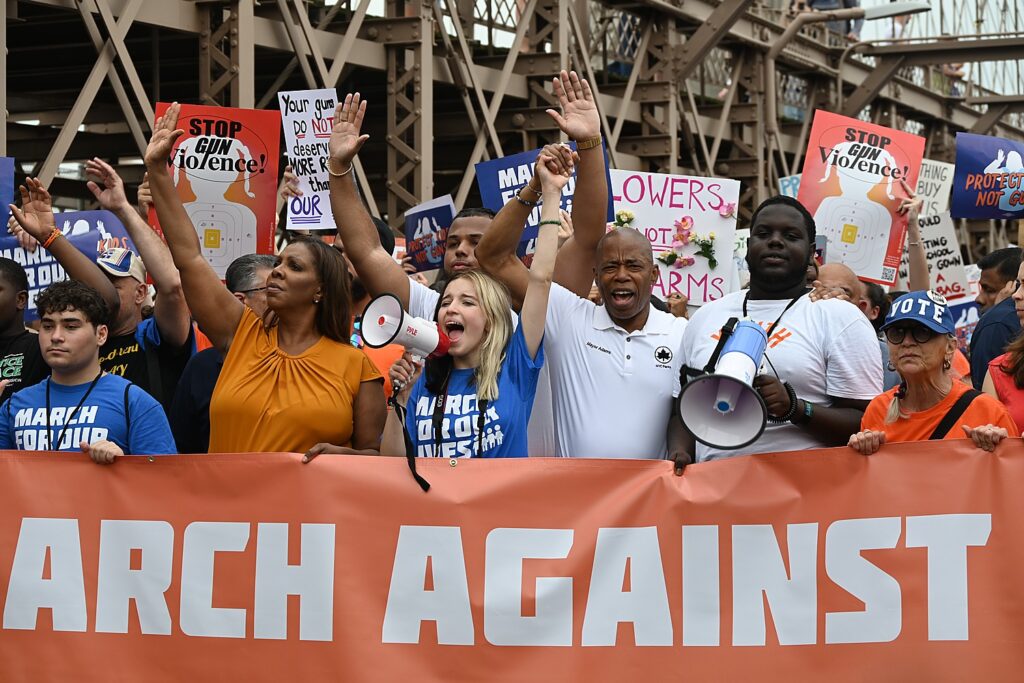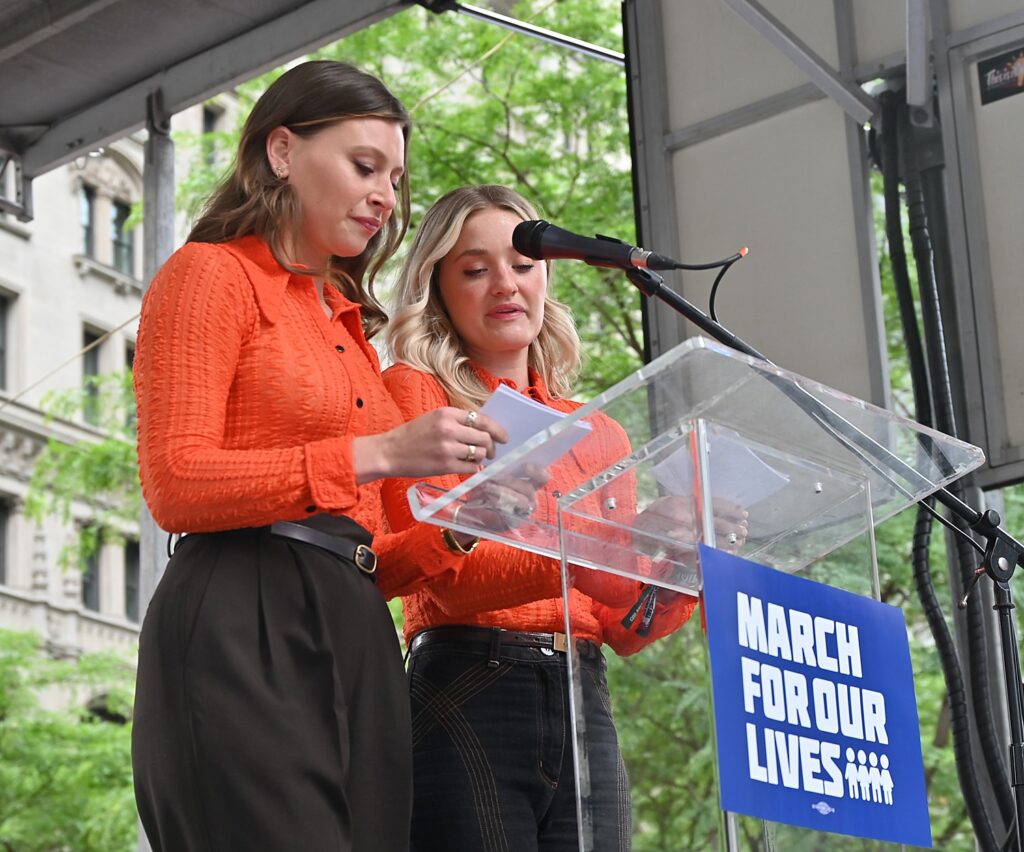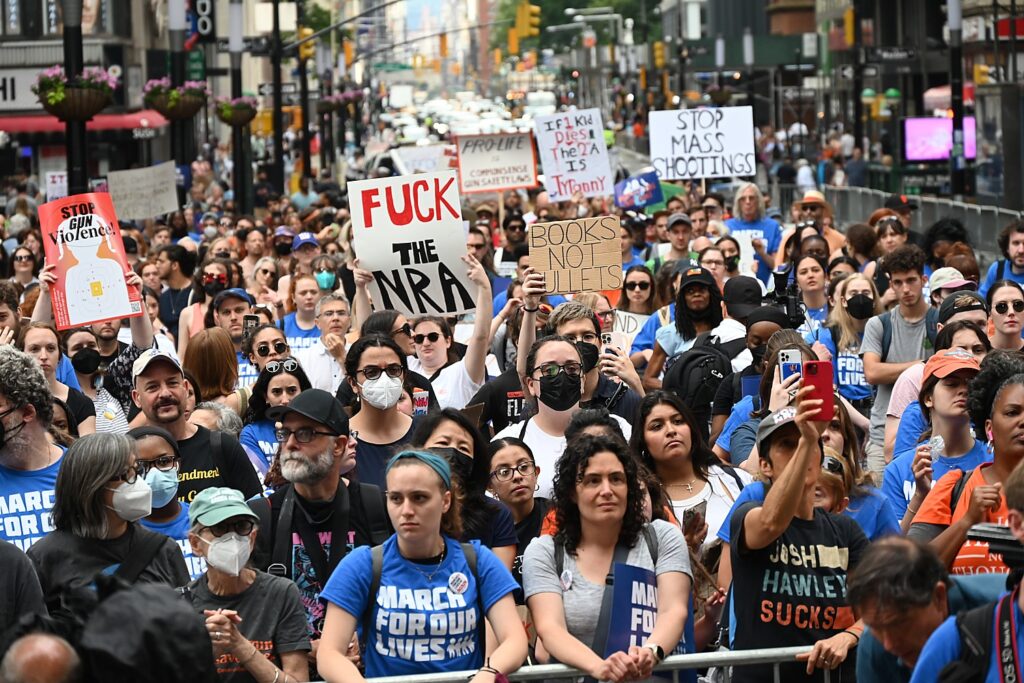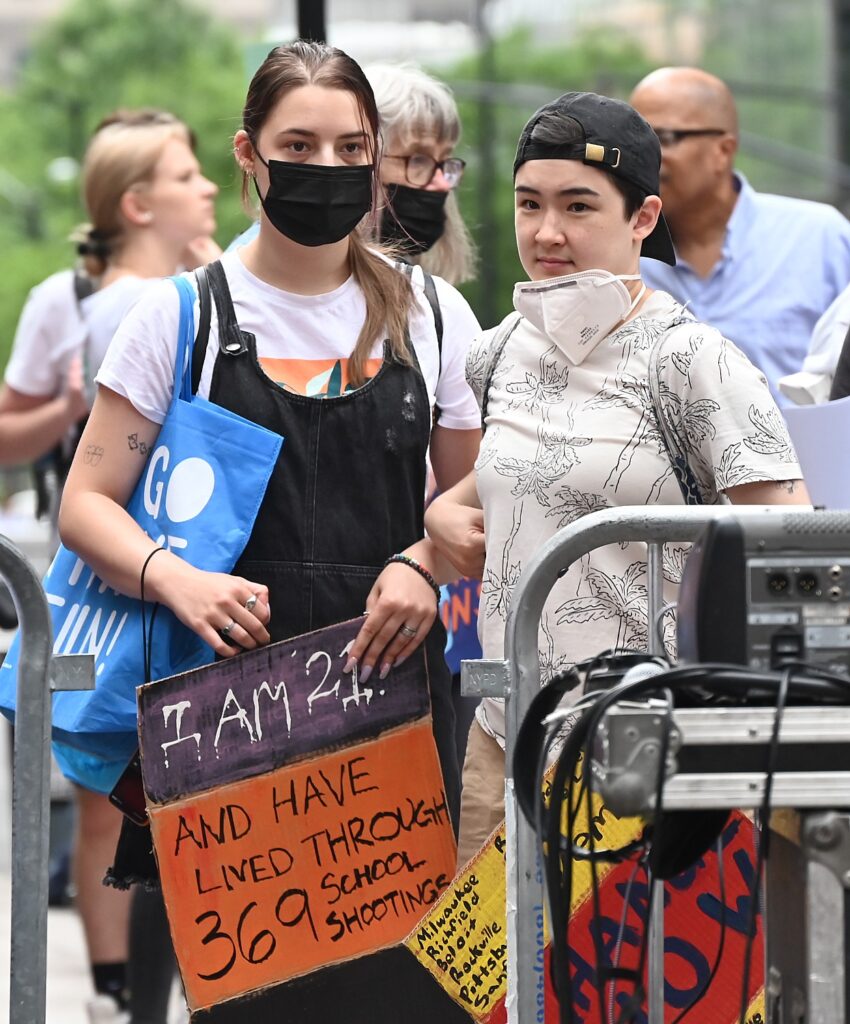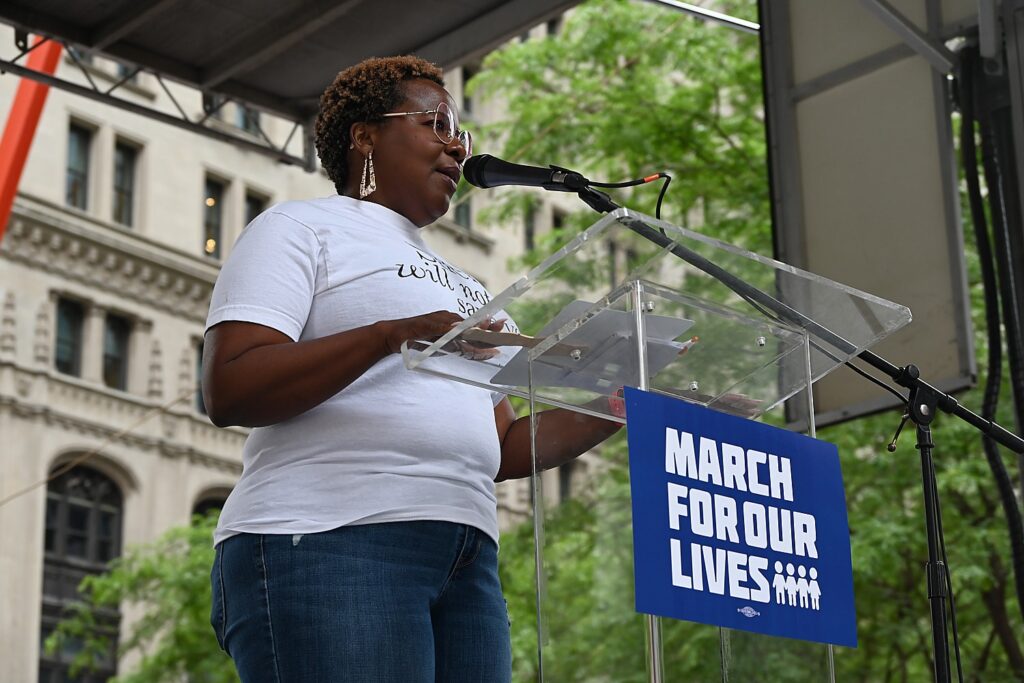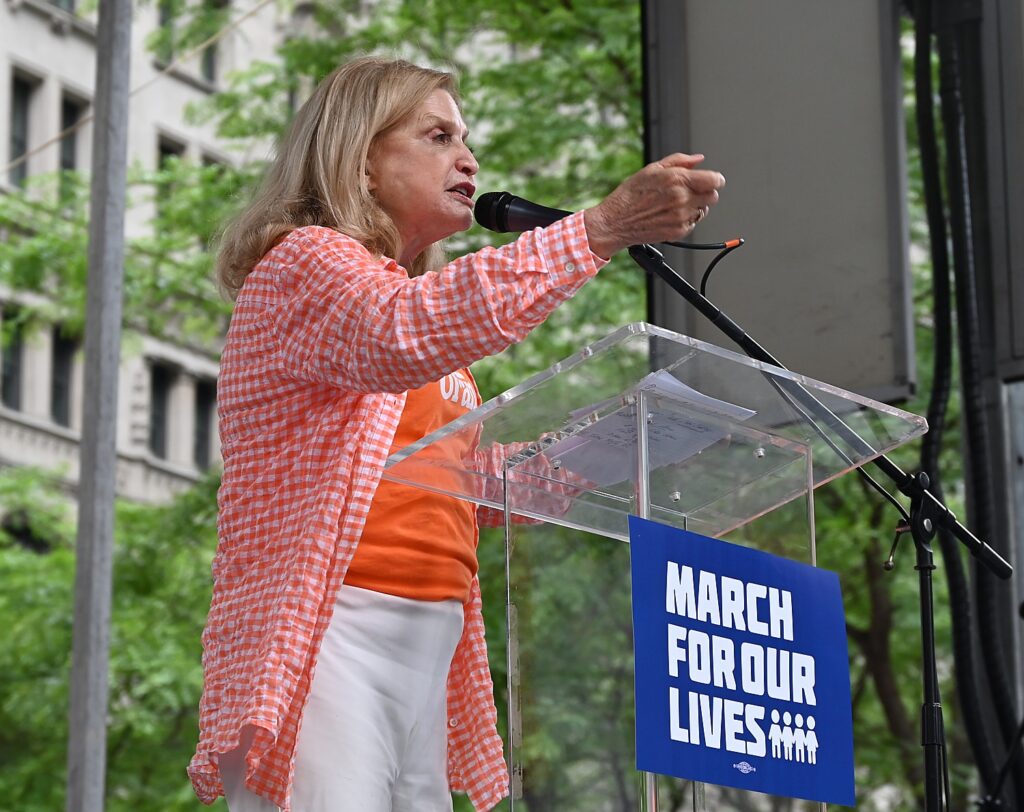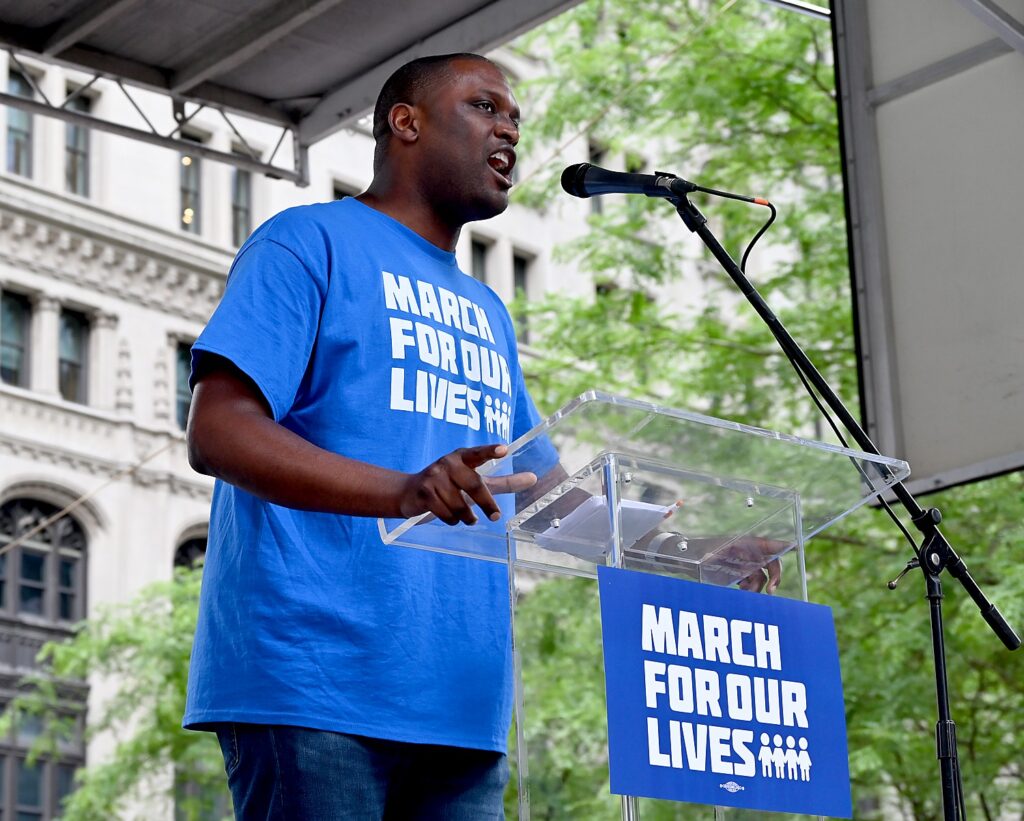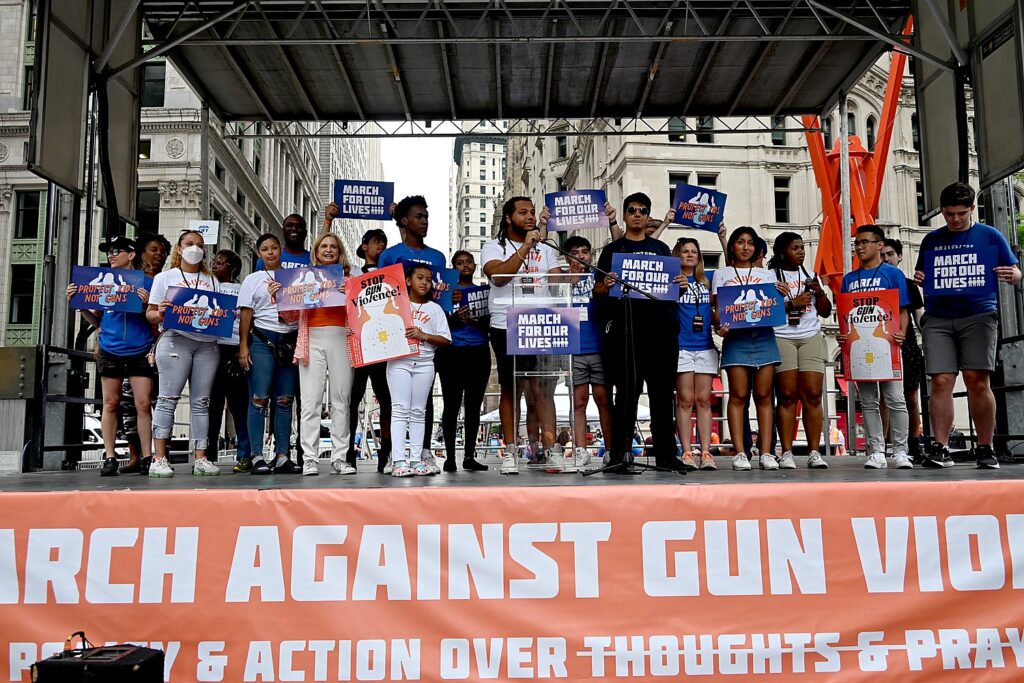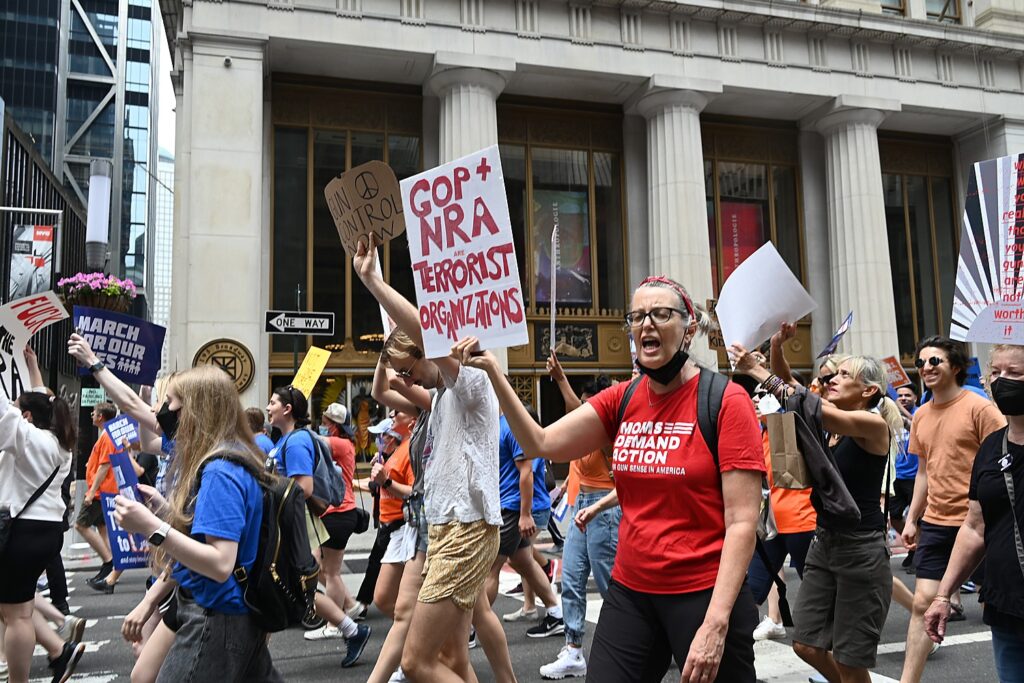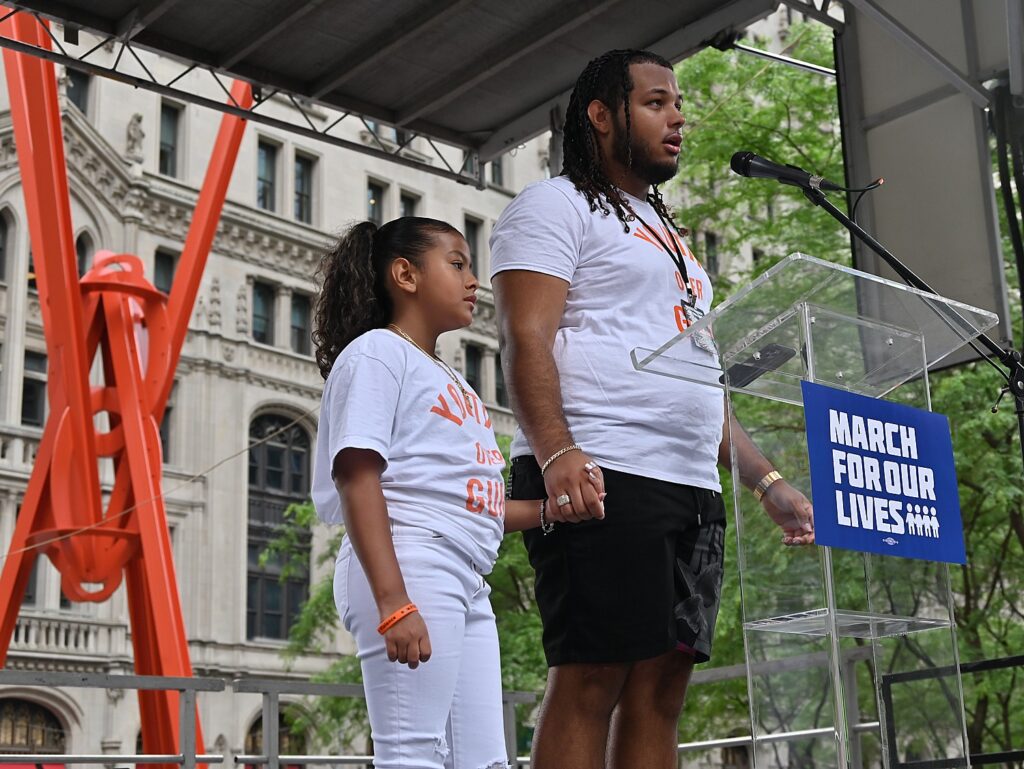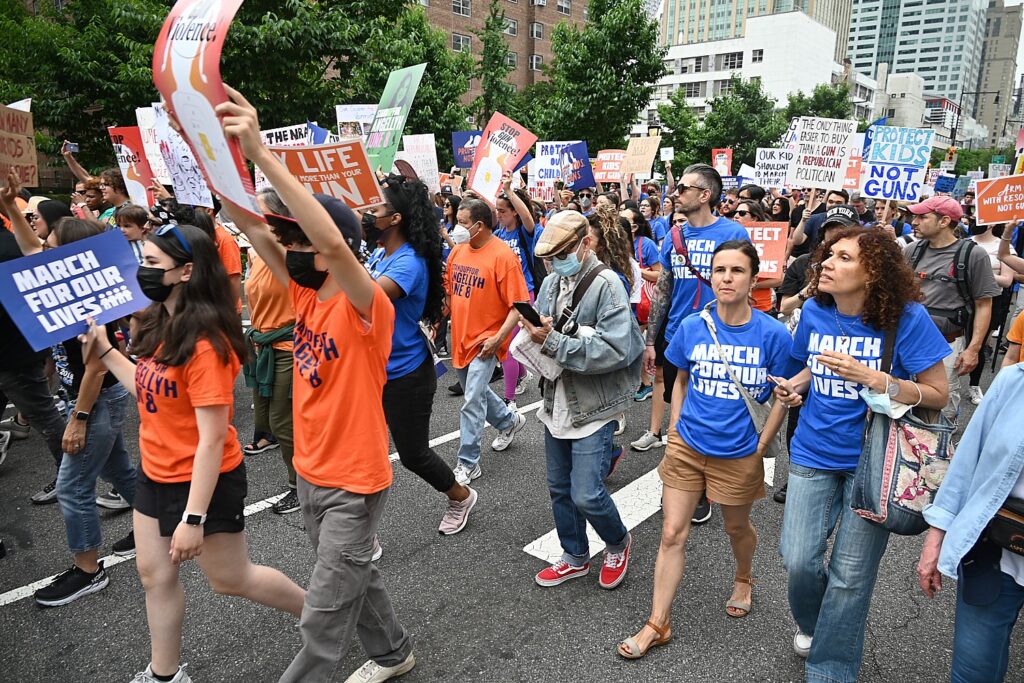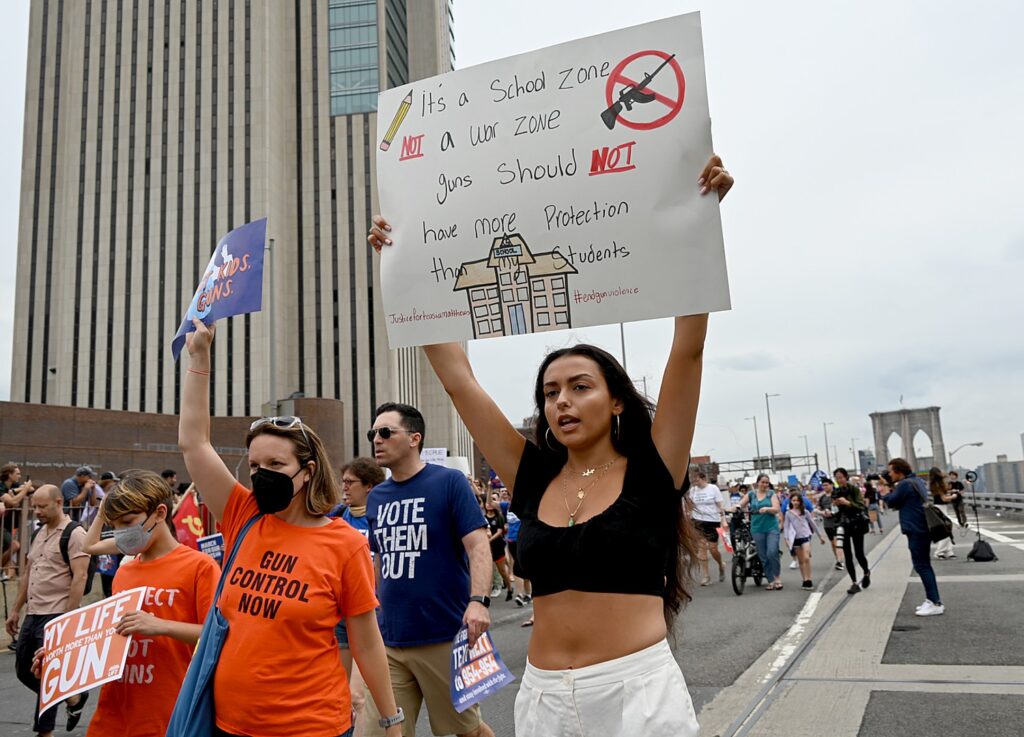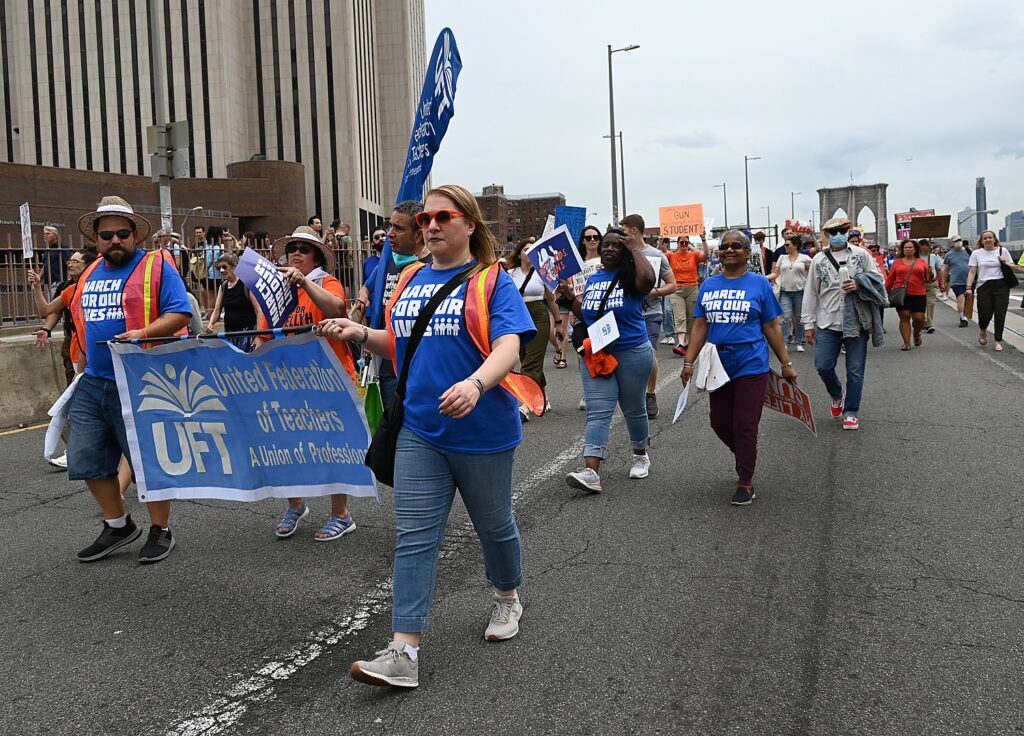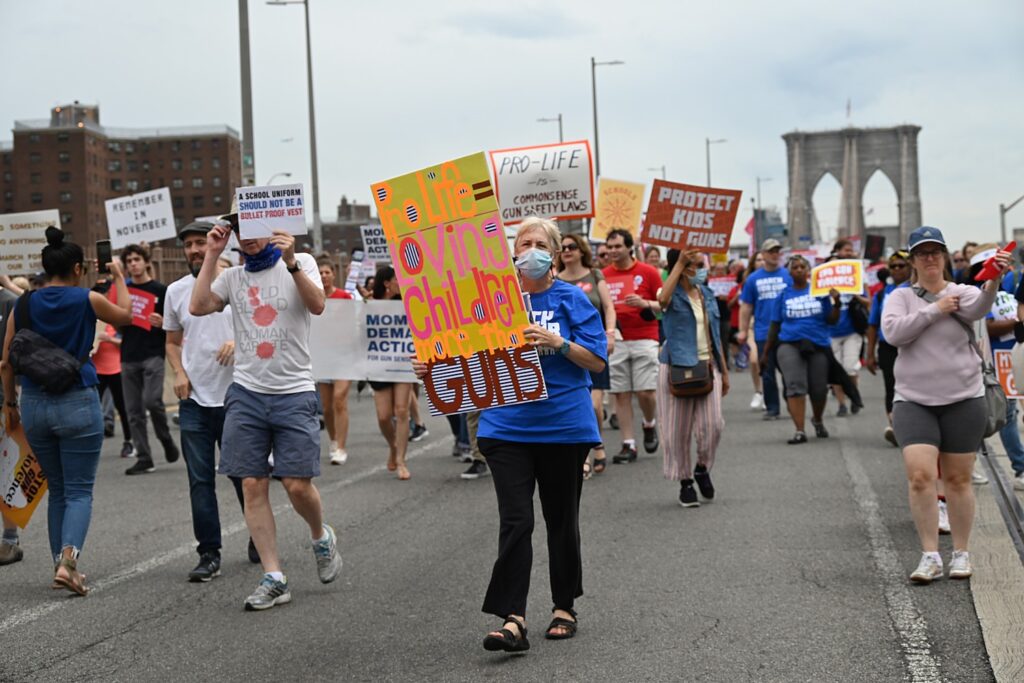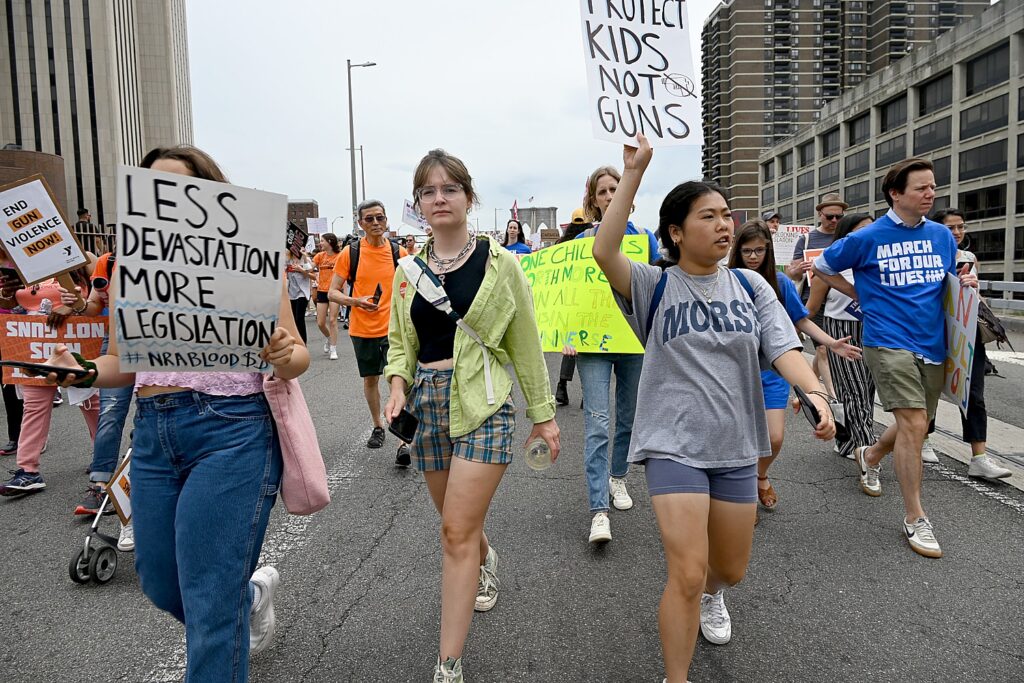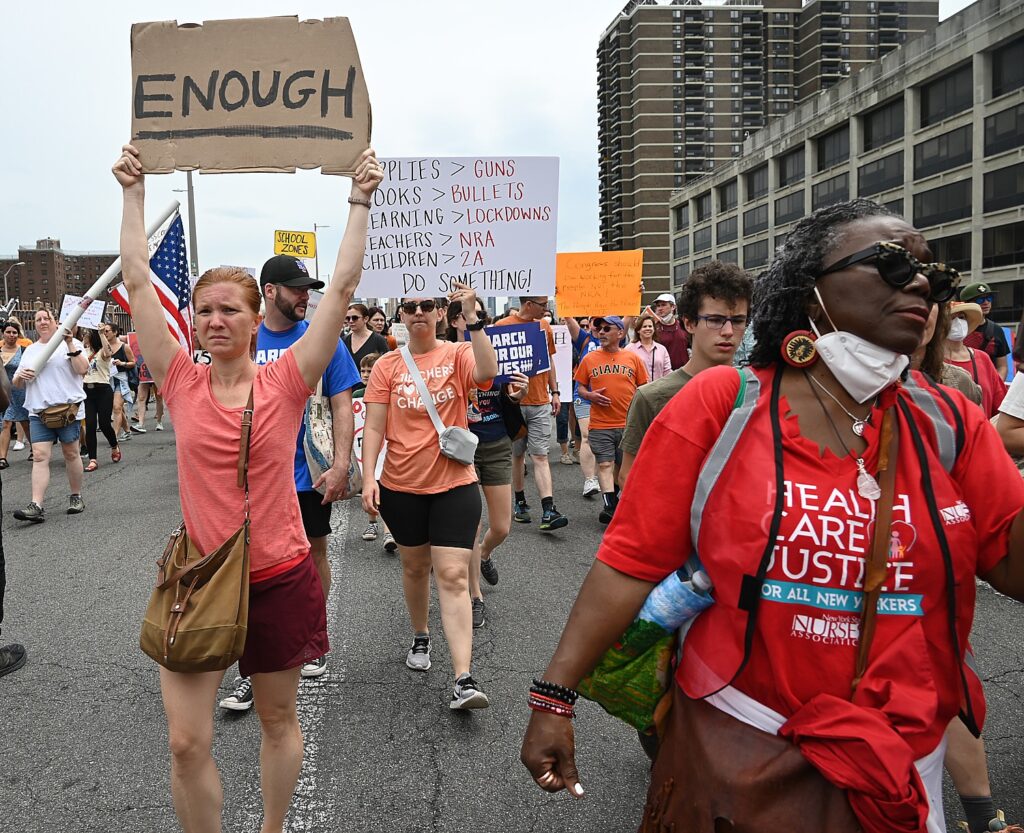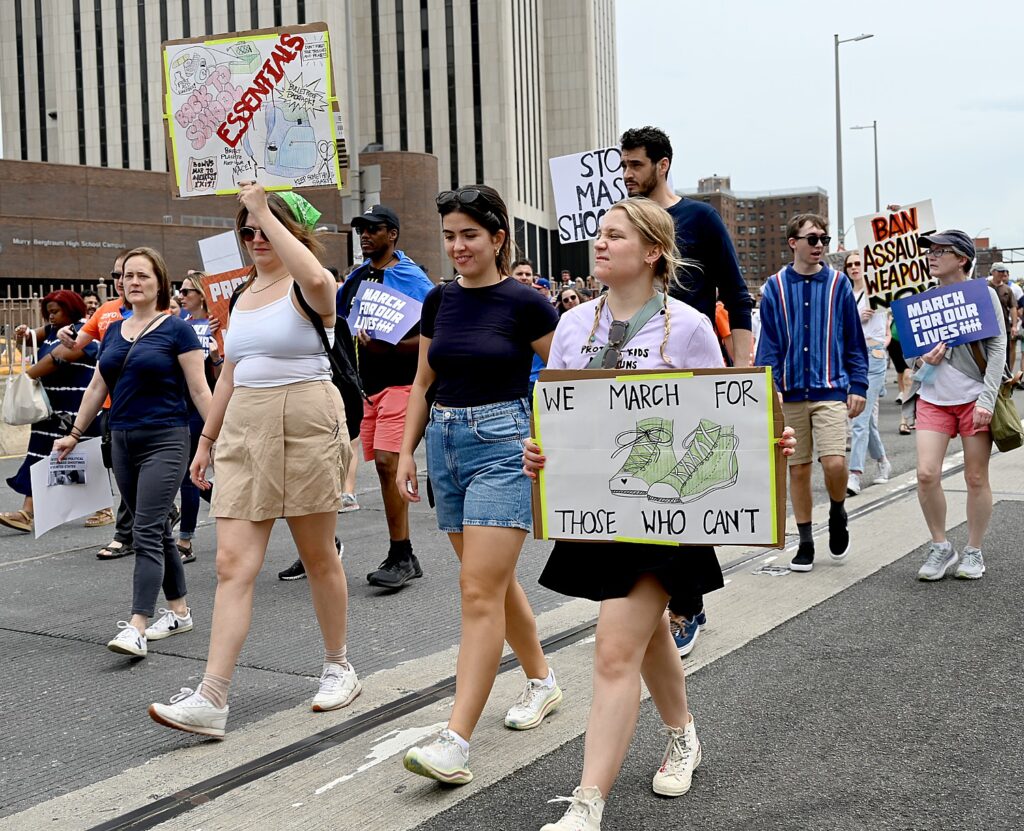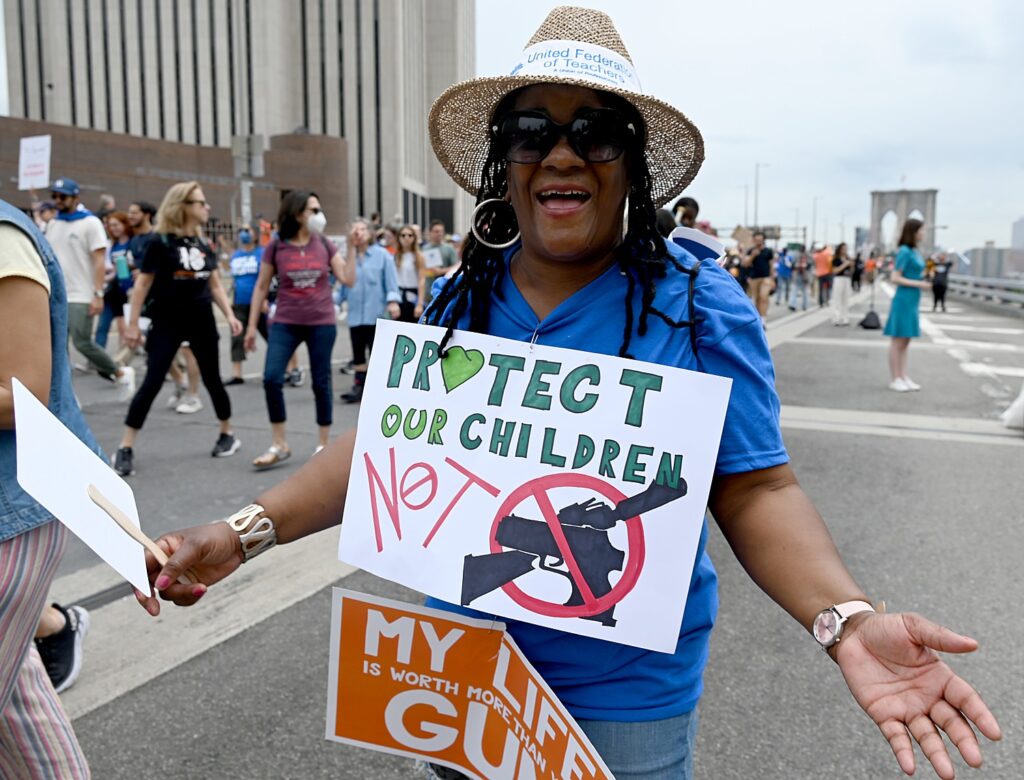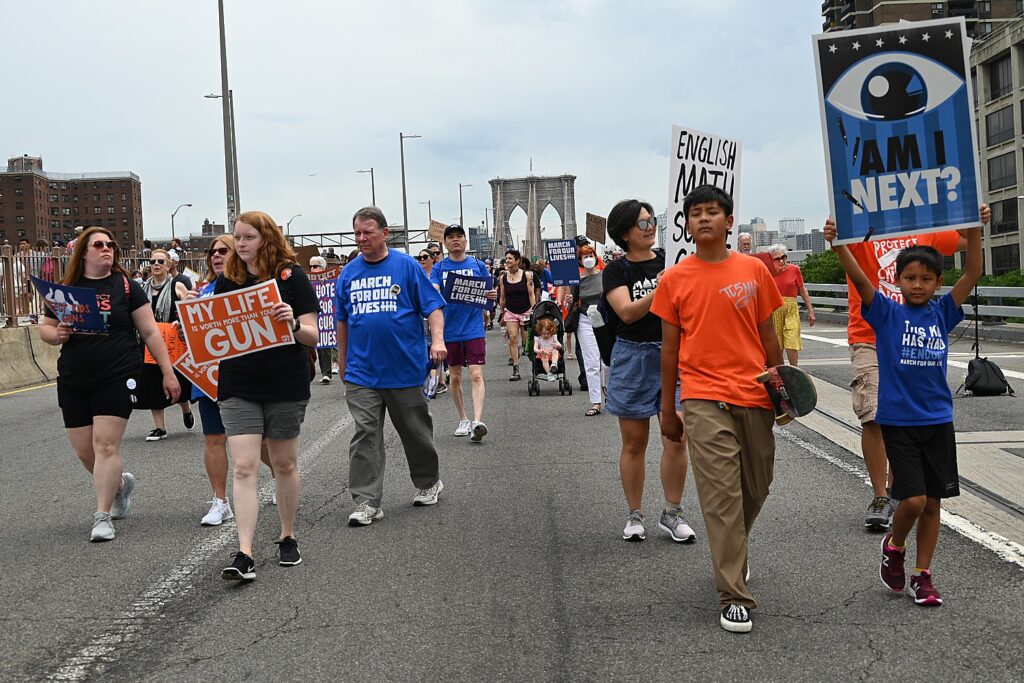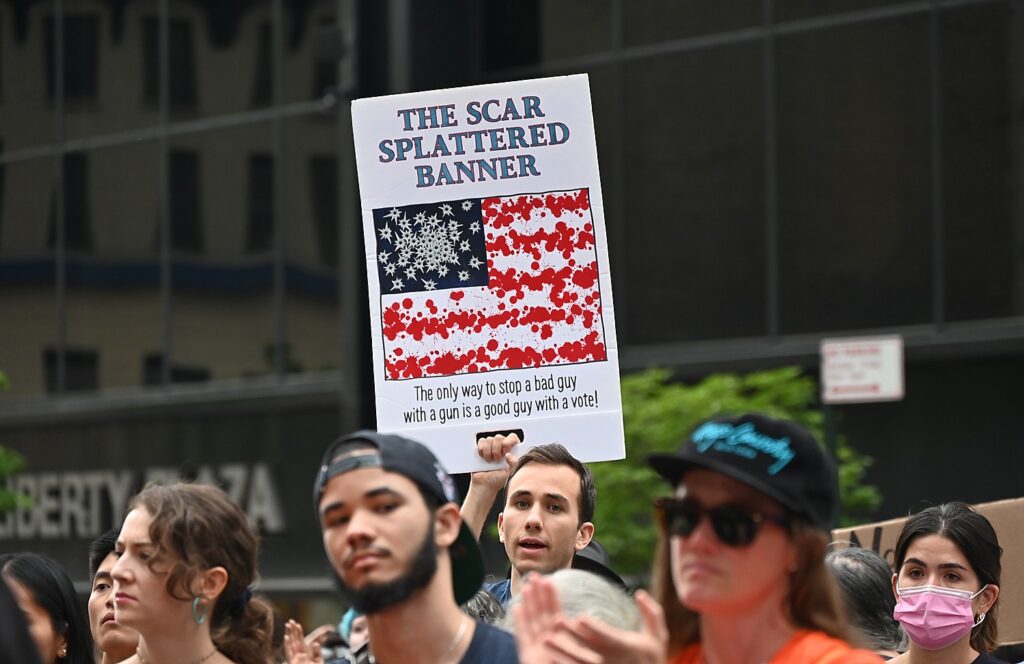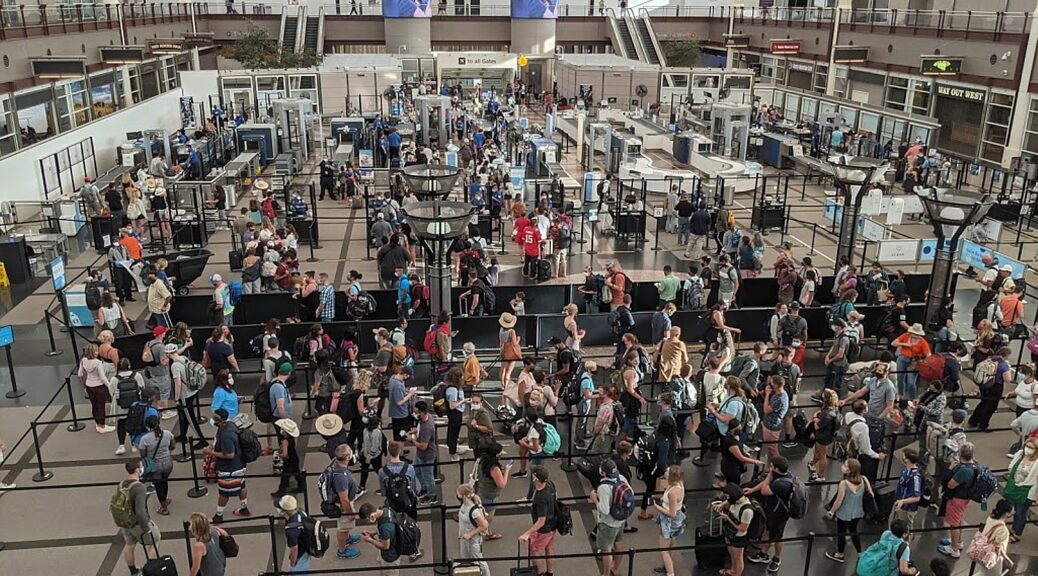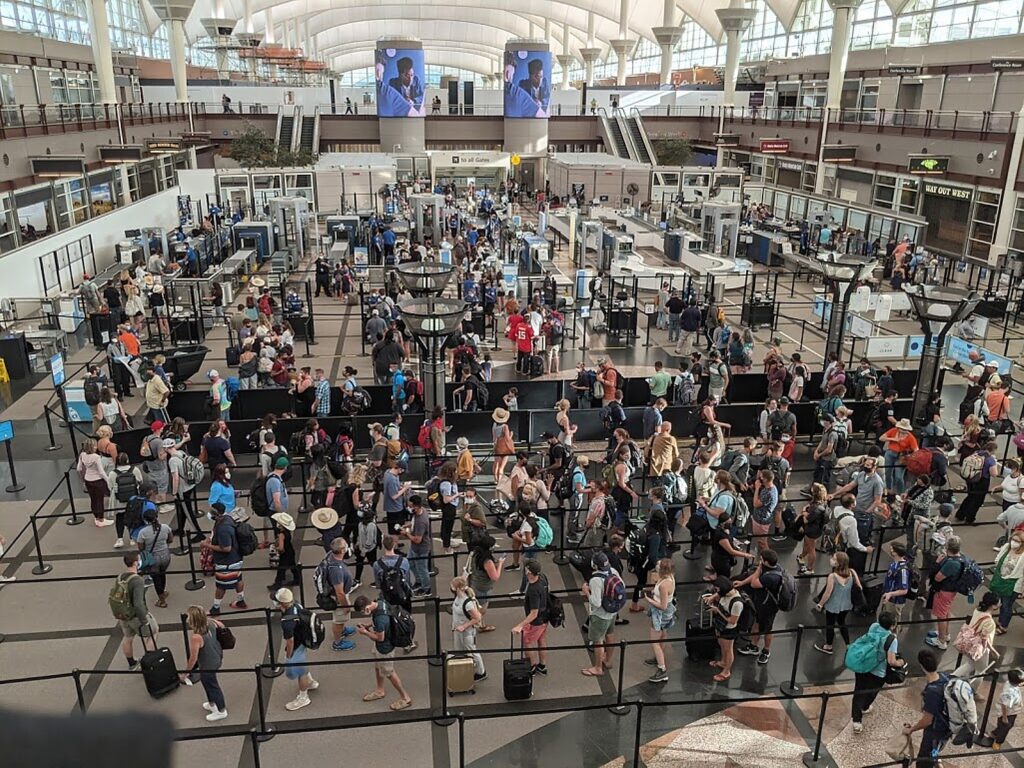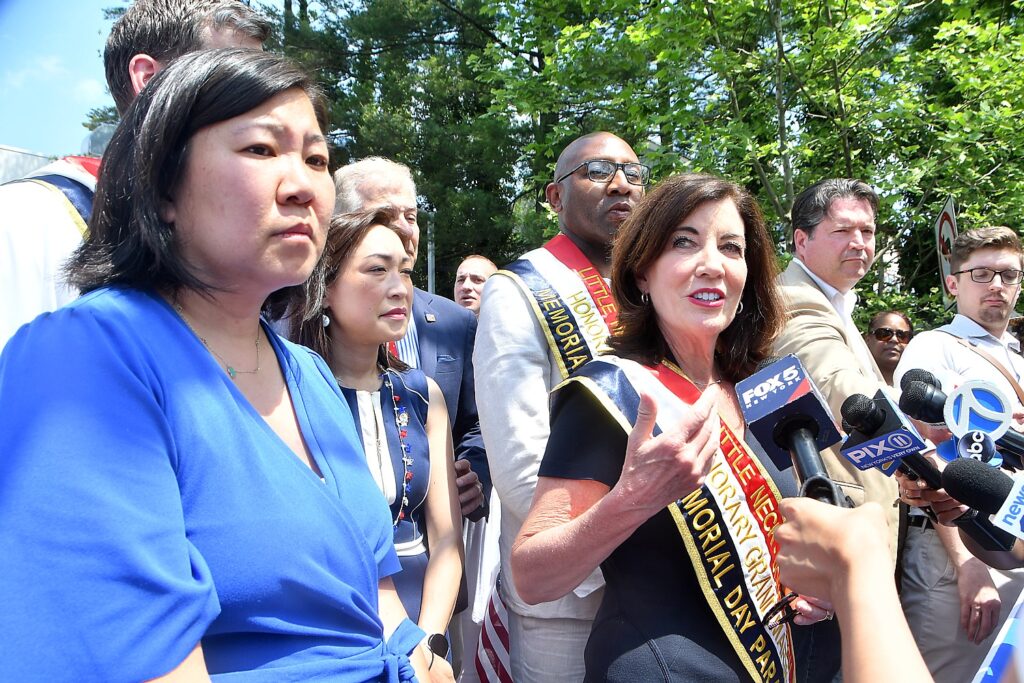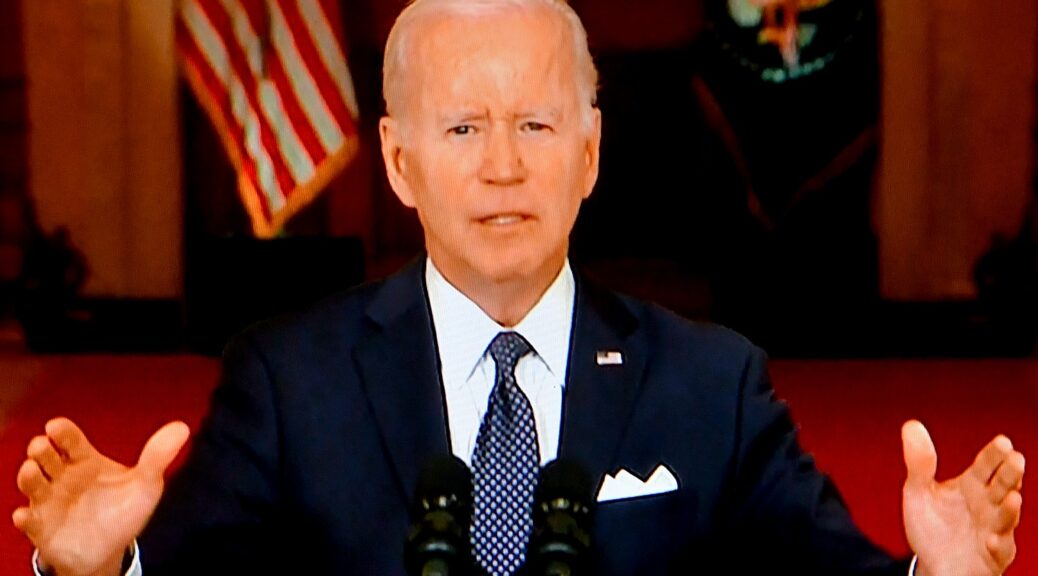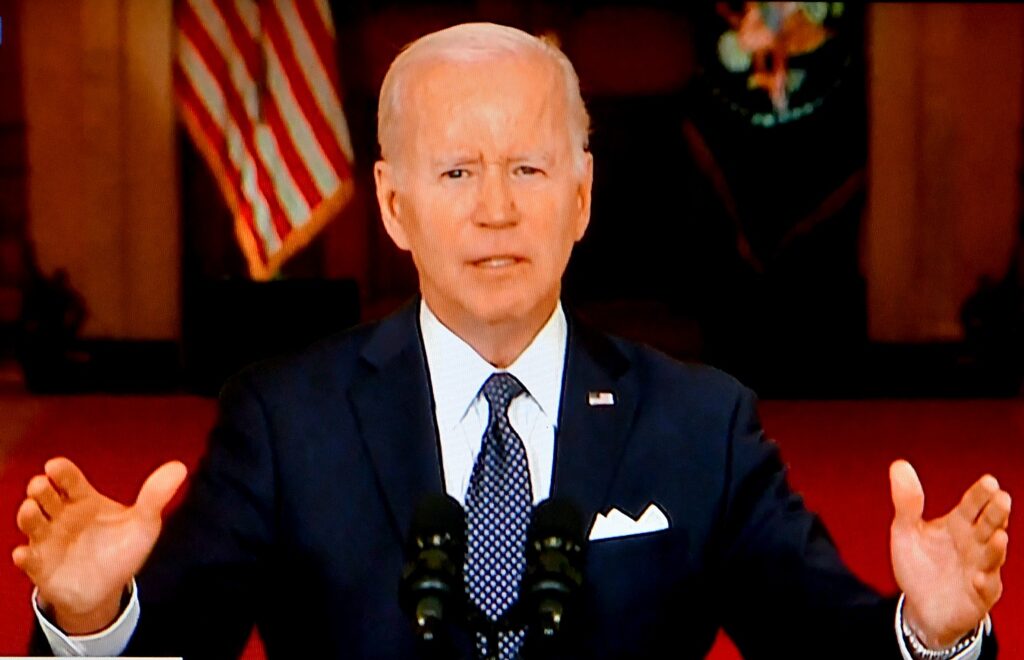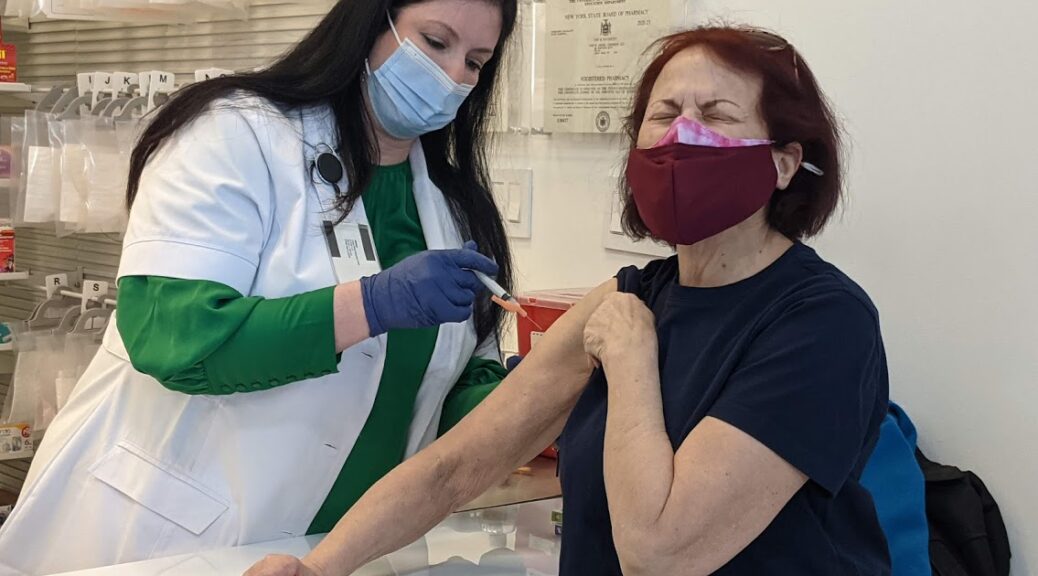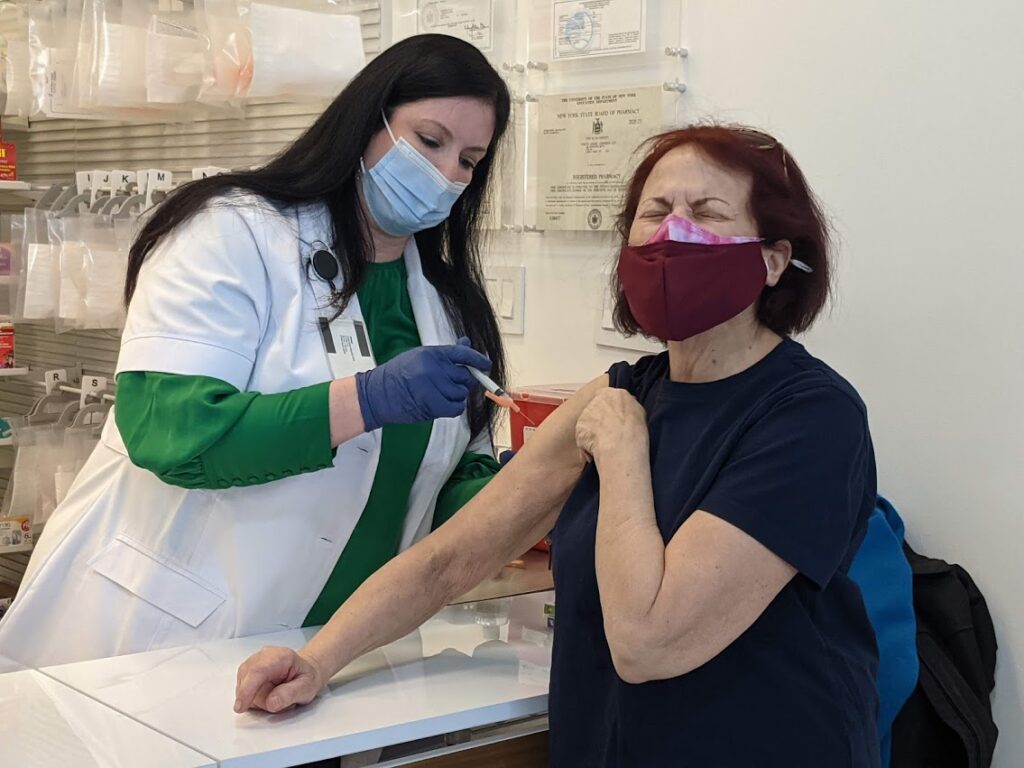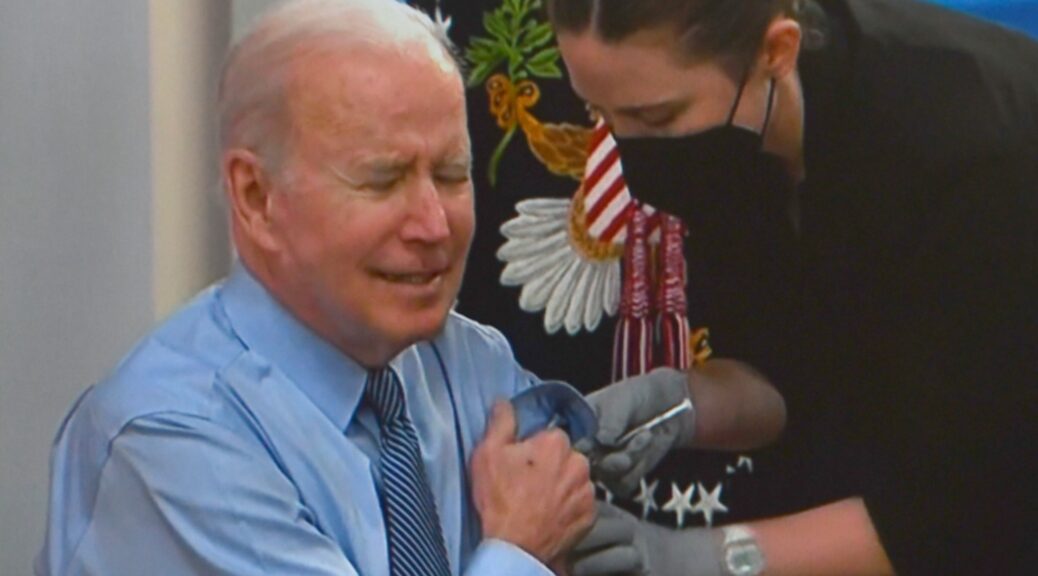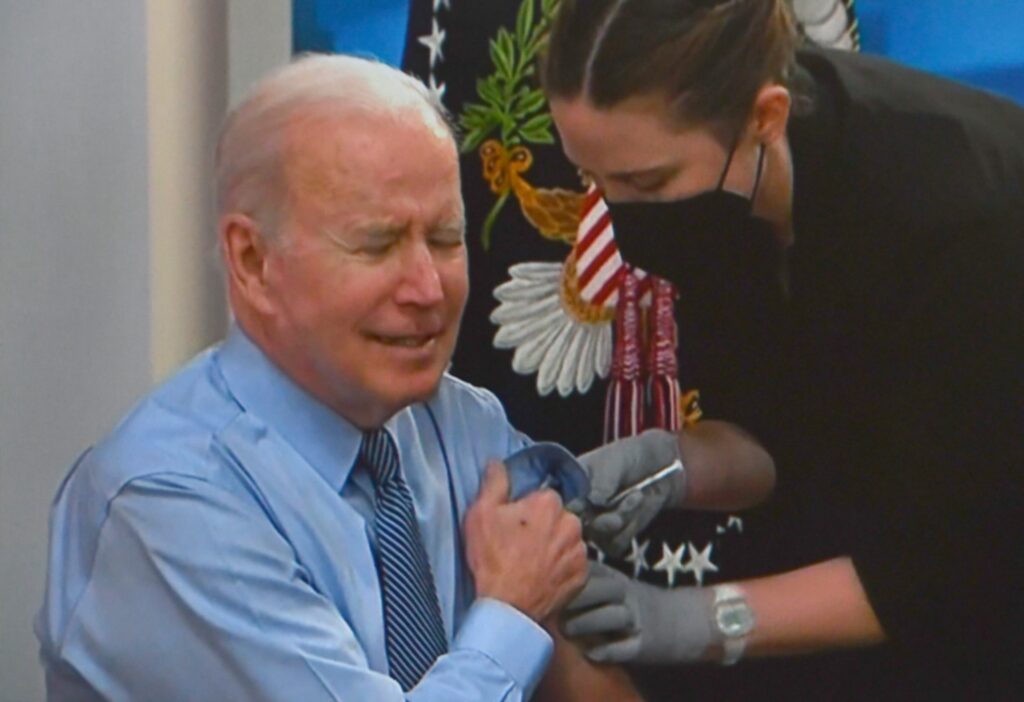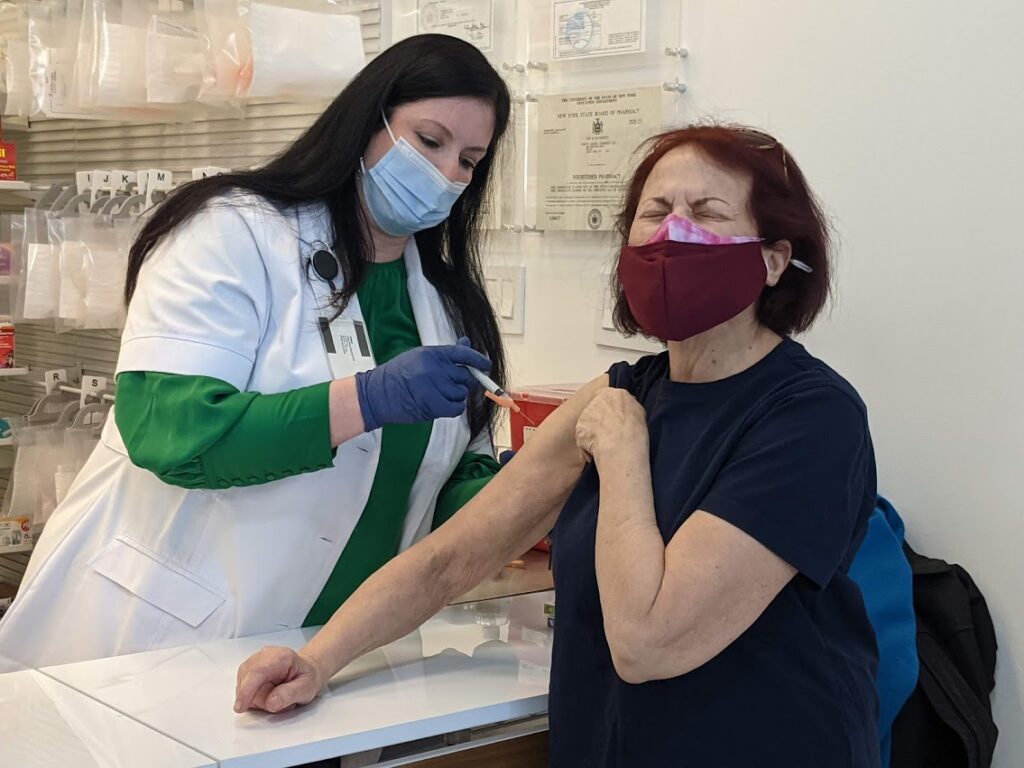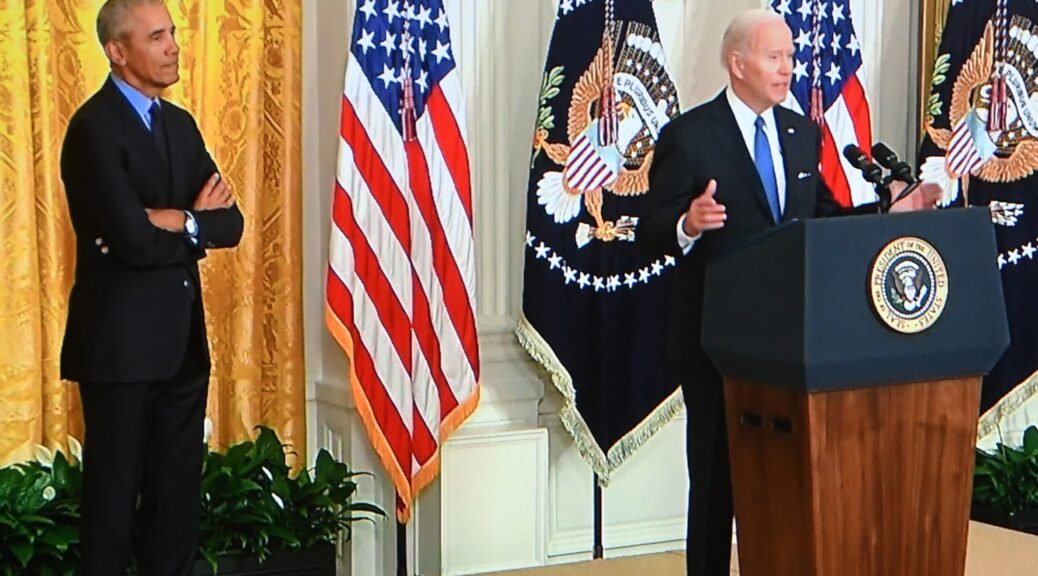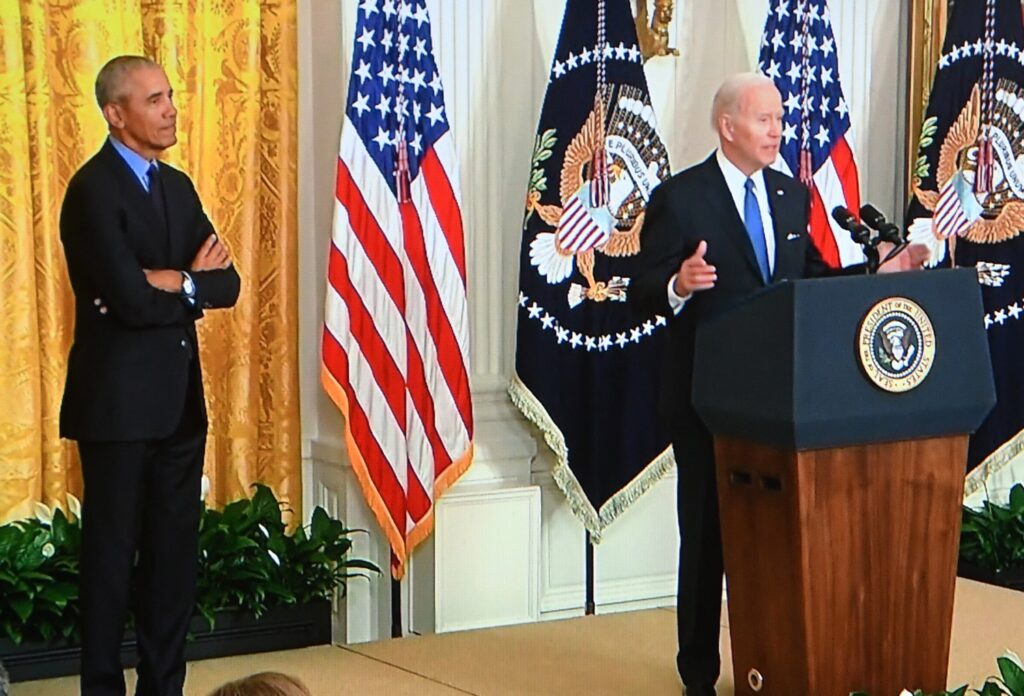
By Karen Rubin, news-photos-features.com
The statement by Clarence Thomas’ majority opinion justifying striking down New York State’s sensible qualifications to obtain a concealed carry gun permit saying regulation must conform with “history” – as if the 1791 technology of muskets and a ball were still the norm instead of high-tech assault weapons made for war that pulverize, vaporize human body – rather than common sense restrictions that go back more than 100 years, means that all of us must live in terror that an altercation, road rage, misunderstanding or a suicidal meltdown will lead to murder or massacre. The Supreme Court has basically given its blessing to gun violence as political weapon of intimidation – threatening poll workers, election workers, voters, elected officials. Imagine Trump or DeSantis thugs, strapped with AR15s blocking access to a polling place, or protesting in front of a home of a Secretary of State or House member of the January 6 committee (but certainly not the Supreme Court justices’ homes).
The Supreme Court has proved itself to be a political actor with a Christo Fascist ideological agenda – overturning state’s rights to protect citizens against guns and epidemic while insisting on state’s right to overturn a woman’s federal, Constitutional right to Equal Protection or equal citizenship. The court has lost all legitimacy or credibility – with three justices illegally placed on the court by an illegitimate president using anti-constitutional means by the Republican Senate Majority Leader, and a fourth corrupt justice, Clarence Thomas who should be impeached.
So short of disregarding the court’s radical extremist majority altogether, states should follow the “founders’” 1791 language to the letter. This is what states and municipalities should do to protect citizens from the epidemic of gun violence:
All gun owners should be required to enlist in a well-regulated militia, be required to go for regular training, be registered, licensed every five years, and be prepared to defend the state.
Also: impose tax on guns, ammunition to support a Victims Fund. Require gun owners to have liability insurance.
Following the tactic used by anti-choice activists, restrict all gun sales to licensed gun sellers, who are restricted where and when they can operate, and who are held liable if they sell a gun to someone who failed background check or if the gun is used in crime. Outlaw online and private sales. Restrict what kinds of guns and ammunition can be sold.
Require gun manufacturers to use SMART ID so only the registered, licensed, trained gun owner can operate the gun; require microstamping so that ammunition used in crime can be traced back. Make gun manufacturers liable when their guns are used in crimes, mass shooting. Restrict advertising (as is done for tobacco sales).
Here are the statements from New York State Governor Kathy Hochul, New York City Mayor Eric Adams, and President Joe Biden:
Governor Hochul: “As Governor of the State of New York, my number one priority is to keep New Yorkers safe, but today the Supreme Court is sending us backwards in our efforts to protect families and prevent gun violence.”
Hochul: “I’m prepared to call the legislature back into session to deal with this. We’ve been in contact with the leadership. We’re just looking at dates. Everyone wants a little bit of time to digest this, but I will say we are not powerless in this situation. We’re not going to cede our rights that easily. Despite the best efforts of the politicized Supreme Court of the United States of America, we have the power of the pen.”
We just received some very disturbing news from Washington; that the Supreme Court of the United States of America has stripped away the state of New York’s right and responsibility to protect its citizens with a decision – which we are still digesting – which is frightful in its scope of how they are setting back this nation and our ability to protect our citizens back to the days of our founding fathers. And the language we’re reading is shocking.
As Governor of the State of New York, my number one priority is to keep New Yorkers safe, but today the Supreme Court is sending us backwards in our efforts to protect families and prevent gun violence. And it’s particularly painful that this came down at this moment. We are still dealing with families in pain from mass shootings that have occurred; the loss of life of their beloved children and grandchildren.
Today, the Supreme Court struck down a New York law that limits who can carry concealed weapons. Does everyone understand what a concealed weapon means? That you have no forewarning that someone can hide a weapon on them and go into our subways, go into our grocery stores like stores up in Buffalo, New York, where I’m from, go into a school in Parkland or Uvalde.
This could place millions of New Yorkers in harm’s way. And this is at a time when we’re still mourning the loss of lives, as I just mentioned. This decision, isn’t just reckless, it’s reprehensible. It’s not what New Yorkers want. We should have the right of determination of what we want to do in terms of our gun laws in our state.
If the federal government will not have sweeping laws to protect us, then our states and our governors have a moral responsibility to do what we can and have laws that protect our citizens because of what is going on – the insanity of the gun culture that has now possessed everyone all the way up to even to the Supreme Court.
The law we’re talking about has been in place since the early 1900s. And now to have our ability to determine who is eligible for a concealed carry permit – this is not an ordinary permit. This is a special use that you can hide it from people. We have limitations, if it’s for a proper cause, someone who’s been threatened, someone who needs it for their job as a security guard. We have classifications where it is allowed and has been allowed for over a hundred years.
We do not need people entering our subways, our restaurants, our movie theaters with concealed weapons. We don’t need more guns on our streets. We’re already dealing with a major gun violence crisis. We don’t need to add more fuel to this fire.
But I will tell New Yorkers, we’ve been ready for this. We feared this day would come and it came. At this very moment when we are about to sign a law into place, the origins of which was a loss of a 14 year old child, Alyssa, in her school.
The confluence of these two events is shocking. But again, I’m going to reassure this state. We are reading the language as we speak. We’ve been preparing, but we have been working with a team of experts, legal experts from all over this country and organizations like Everytown, true leaders, to make sure that we are prepared.
I’m prepared to call the legislature back into session to deal with this. We’ve been in contact with the leadership. We’re just looking at dates. Everyone wants a little bit of time to digest this, but I will say we are not powerless in this situation. We’re not going to cede our rights that easily. Despite the best efforts of the politicized Supreme Court of the United States of America, we have the power of the pen.
And I just want to read some language here. Apparently, the Supreme Court has now decided with this far reaching decision that the two step standard that had been in place since Heller [and] McDonald, where they analyze the Second Amendment, where it combines history. We have a history, yes we do, but also means and scrutiny. Does the means of the restriction justify the infringement.
And most people would say, yes, we have a right to protect people from gun violence. But I’ll simply say in our very quick analysis because this is only minutes old, they have now said that the government must demonstrate that the regulation is consistent with this nation’s historical tradition of firearm regulation.
That’s it. No longer can we strike the balance. Only if a firearm regulation is consistent with this nation’s historical tradition may a court conclude that the individual’s conduct falls outside the Second Amendment’s unqualified command.
Shocking, absolutely shocking that they have taken away our right to have reasonable restrictions. We can have restrictions on speech. You can’t yell fire in a crowded theater, but somehow there’s no restrictions allowed on the second amendment.
This is New York. We don’t back down, we fight back. And we’ll be alerting the public, the media in the very short term of exactly what our language is that we’ve been analyzing. We have language we’d like to now enact into law. We’ll be sharing that with the leaders.
And I’m sorry this dark day has come. That we’re supposed to go back to what was in place since 1788 when the Constitution of United States America was ratified. And I would like to point out to the Supreme Court justices that the only weapons at that time were muskets. I’m prepared to go back to muskets.
I don’t think they envision the high capacity assault weapon magazines intended for battlefields as being covered from this, but I guess we’re just going to have to disagree.
New York City Mayor Eric Adams: This decision has made every single one of us less safe from gun violence.
This decision has made every single one of us less safe from gun violence. It ignores the shocking crisis of gun violence every day, engulfing not only New York, but entire country.
To base this decision on “historical past” that does not account for the reality of today, ignores the present and endangers our future.
While nothing changes today, we have been preparing for this decision and will continue to do everything possible to work with fed, state, local partners to protect city. We will collaborate with other mayors, municipality leaders, leave no stone unturned, as we seek to undue and mitigate the damage today.
We are undertaking a comprehensive review with counsel, legal experts, as we start to define sensitive locations where carrying gun is banned and reviewing application process to insure only those fully qualified can obtain carry license.
We cannot allow New York to become the wild wild west. That’s unacceptable. We will not allow our city to live in fear that everyone around is armed, and any altercation could evolve into shootout. We will not allow our police to be subject to further danger, making their already difficult jobs even more harrowing.
We will do everything in our power, using every legal resource to insure gains are not undone, and New Yorkers are not put in greater danger of gun violence.
There is no place in the nation this decision affects more than New York City, no place in the nation that will be impacted more than New York City or is affected as much as New Yorkers.
And we are prepared to set example, lead the country in fighting back this decision. Today’s Supreme Court decision may feed gun violence.
Now is time for every elected official who cares for safety of all Americans to come together, to respond thoroughly, comprehensively to this appalling decision.
New York City Police Commissioner Keechant L. Sewell added, “This decision has been remanded back to lower courts. Nothing changes. A premise permit doesn’t automatically change to a carry permit. If you carry without a permit, you will be arrested.”
Statement by President Joe Biden on Supreme Court Ruling on Guns
I am deeply disappointed by the Supreme Court’s ruling in New York State Rifle & Pistol Association v. Bruen. Since 1911, the State of New York has required individuals who would like to carry a concealed weapon in public to show a need to do so for the purpose of self-defense and to acquire a license. More than a century later, the United States Supreme Court has chosen to strike down New York’s long-established authority to protect its citizens. This ruling contradicts both common sense and the Constitution, and should deeply trouble us all.
In the wake of the horrific attacks in Buffalo and Uvalde, as well as the daily acts of gun violence that do not make national headlines, we must do more as a society — not less — to protect our fellow Americans. I remain committed to doing everything in my power to reduce gun violence and make our communities safer. I have already taken more executive actions to reduce gun violence than any other President during their first year in office, and I will continue to do all that I can to protect Americans from gun violence.
I urge states to continue to enact and enforce commonsense laws to make their citizens and communities safer from gun violence. As the late Justice Scalia recognized, the Second Amendment is not absolute. For centuries, states have regulated who may purchase or possess weapons, the types of weapons they may use, and the places they may carry those weapons. And the courts have upheld these regulations.
I call on Americans across the country to make their voices heard on gun safety. Lives are on the line.

